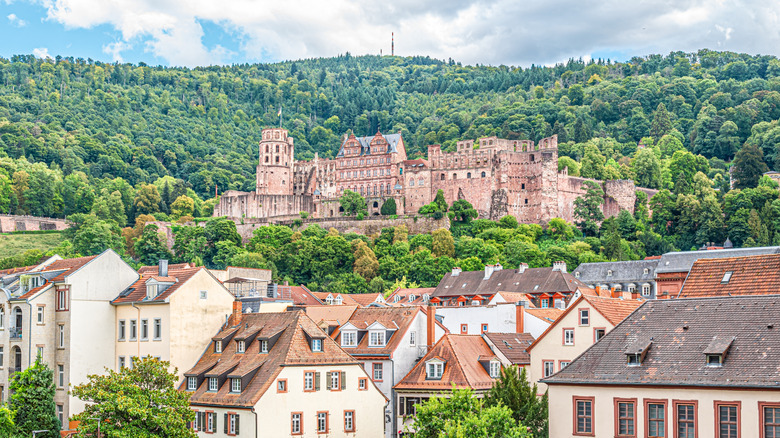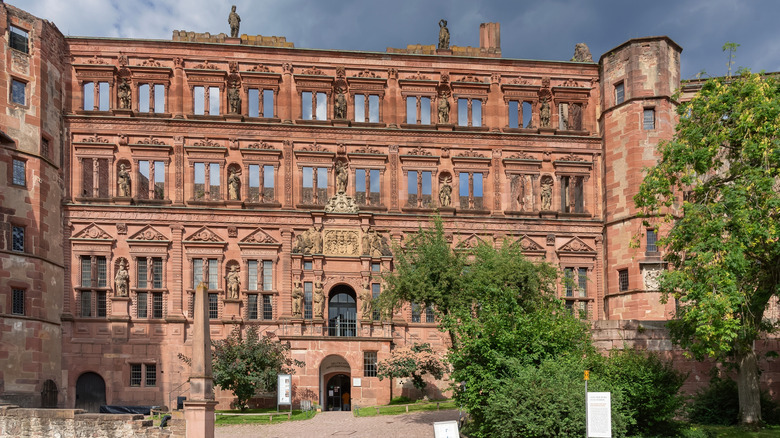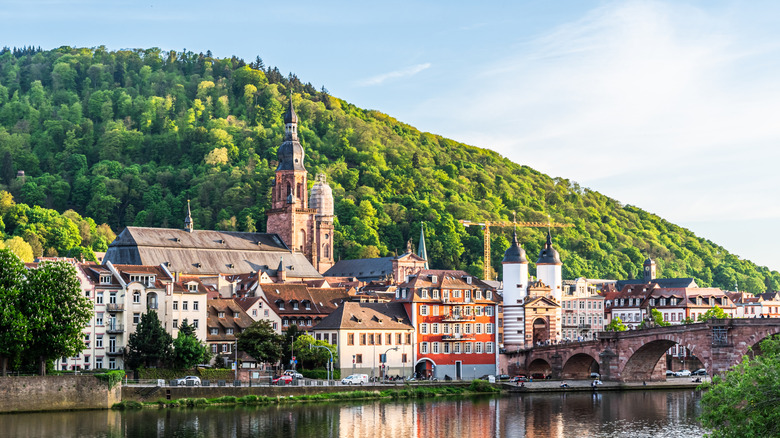This Stunning Castle In Germany Is A Popular Tourist Attraction With Storybook Charm
Nestled within lush green forests not too far from Frankfurt and Stuttgart lies one of Europe's most stunning and romantic ruins — a true icon of Germany's Rhine-Neckar region. Set atop a hill overlooking the charming old town of Heidelberg and the Neckar River, Heidelberg Castle is a landmark that has been captivating travelers, painters, and poets since its construction in the early 13th century. Half fortress and half Renaissance palace, this castle has dominated the skyline above Heidelberg for over 700 years, witnessing the ravages of war, lightning strikes, and the inevitable passage of time. Unlike the well-preserved Neuschwanstein Castle that inspired Disney's Sleeping Beauty, what remains of Heidelberg Castle today is nothing short of spectacular — a structure that tells the story of power, history, art, mystery, and resilience.
Despite its turbulent history, the castle remains a living museum, standing high above the city that thrives beneath its weathering walls. Below, the Altstadt (Old Town) hums with energy. Students from Germany's oldest university (complete with an old prison for misbehaved students) wander through the town's narrow cobblestone lanes, nestled into cafes tucked between centuries-old buildings. The contrast between the castle's weathered exterior and the youthful vibrancy of the town is what adds to Heidelberg's unmistakable, storybook charm. Each year, more than a million visitors climb to the top of the hill (or ride comfortably aboard its funicular) to explore the castle's vast courtyards, sculpted facades, panoramic viewpoints, and unique history. It's a must-stop castle for history and architecture lovers alike on a visit to Germany.
Exploring the beauty of Heidelberg Castle
Exploring Heidelberg Castle is as much about atmosphere as it is about architecture. Although never fully restored, inside its walls, visitors will find a blend of preserved halls, reconstructed facades, and artifacts steeped in mystery. At the heart of the castle sits the courtyard, surrounded by a unique mix of architectural styles from different eras. Nearby, the Ottheinrich Building, which houses the beautiful Imperial Hall, is adorned with ornate statues of Roman Emperors and ancient heroes. The hall is said to be one of the most beautiful rooms in the castle, with many of its pieces surviving the damage of war and fire. Within the building's basement sits the fully preserved Apothecary Museum, which displays centuries-old lab equipment, rare herbs, and recreations of historic apothecaries.
From here, visitors can explore Friedrich's Wing, the stately residential palace, featuring original statues and portraits of emperors and kings inside, while the outside is adorned with replicas. One of the castle's most curious features is the Heidelberg Tun, an enormous wine barrel rebuilt by Prince-Elector Carl Theodor after the first was destroyed during the Thirty Years' War. This barrel can store around 58,000 gallons of wine and was constructed beneath a platform featuring a dancefloor. A statue of a small court jester called Perkeo stands keeping watch over the barrel, ensuring no man consumes more wine than he was said to have drunk. Beyond the main buildings, the castle's terraces offer stunning panoramic views over the Neckar River. Adjacent to the castle once stood the Hortus Palatinus, a spectacular Renaissance garden that was often referred to as the "Eighth Wonder of the World." Today, although the garden is no longer as intricately unique as it was once planned to be, visitors can appreciate its wide open green spaces, array of trees, and beautiful grottos.
Getting to Heidelberg Castle
Getting to Castle Heidelberg is pretty straightforward. You can either take a bus from the central train station to the stop "Bergbahn," or walk about an hour from the station to the uphill path leading to the castle (called Burgweg). If you choose not to walk uphill, you can take the funicular railway, or the Heidelberg Bergbahn, that departs from Kornmarkt Station in the Old Town. Admission tickets are about $13 and grant visitors access to the castle courtyard and gardens, the Great Wine Barrel, and the German Pharmacy Museum. Combined tickets include a round-trip ride on the funicular and are available at the lower station or online. Guided tours are highly recommended, as they provide insight and access into the castle's fascinating history, its architecture, and the legends that live within its walls.
The castle is open year-round; however, spring through early autumn offer the best experience, with mild weather and lush greenery surrounding the grounds. Not to mention, the castle hosts a special illumination show (the Heidelberger Schlossbeleuchtung) three times a year, followed by a firework show, typically during the summer months, to commemorate the three times it was on fire. Christmastime, although cold, provides visitors with access to one of Europe's best Christmas markets. Arrive early in the morning or later in the afternoon at the castle to avoid crowds, especially during summer weekends when the funicular line is long. Evening visits are particularly atmospheric, as the castle walls glow at sunset and the city lights twinkle below. After exploring the castle, carve out time to explore Heidelberg's Old Town, where landmarks like the Old Bridge (Alte Brücke), the Church of the Holy Spirit, and Heidelberg University are all within walking distance. For a different viewpoint of the castle and Old Town, the Philosophers Walk is an easy trail opposite the river.


